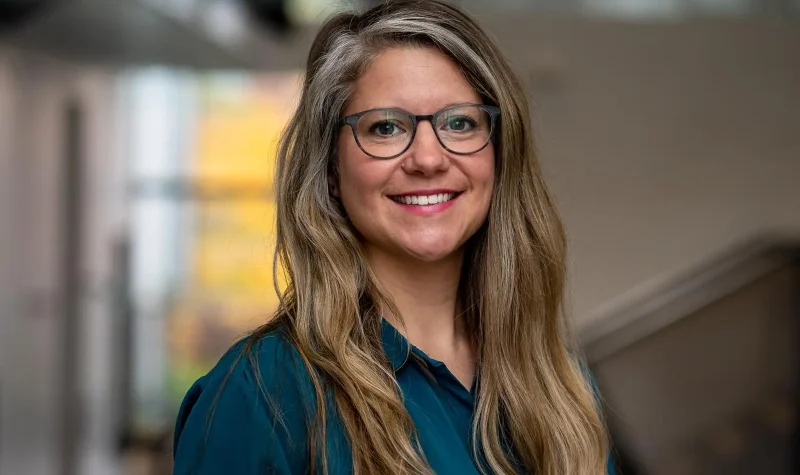Sara-Ann Strong and Hannah MacIntosh are concerned that a new policy on sexual violence is stuck awaiting approval from the university’s senior administration, at a time when occurrence of sexual violence is at its highest: the so-called Red Zone in the first six to eight weeks of the school year.
Sara-Ann Strong is in her final semester at Mount A and previously served on the school’s Advisory Committee on Sexual Violence Prevention chaired by Vice President Anne Comfort. She’s says the lack of an approved policy at the beginning of another school year is “frustrating to say the least.”
Strong says many people are doing their part to reduce incidence of sexual violence on campus this year, including taking bystander training, one of the elements of the school’s new education and prevention strategy that has been implemented by Sexual Violence Prevention and Education Coordinator Tasia Alexopoulos in her first 11 months on the job.
Alexopoulos says a lot has been accomplished in the roughly two years since the campus erupted in protest over how the school handles sexual assault and harassment. “We’ve really created a much more sophisticated approach to working with respondents, or people who have been accused of sexual violence,” says Alexopoulos. “We’re offering things like intensive education in order to understand accountability and repairing harm, rather than simply relying on punishment.”
Procedures for people who report sexual violence have also been revamped to be “very trauma informed and survivor centered,” says Alexopoulos. There’s the REES reporting system which allows people to disclose incidents anonymously and/or without filing formal complaints, which can be a deterrent to reporting.
“We have some really great resources as part of the Wellness Centre team,” says Alexopoulos. “The counsellors, social worker, the harm reduction educator. We’ve been doing a lot actually.”
A big part of Alexopoulos’s first year has been revamping the university’s sexual violence policy, the top tier document that complements other procedures and actions. ”We’ve overhauled the old policy,” says Alexopoulos. “It’s completely new. And whenever that is approved, we’ll be able to implement it.”
Alexopoulos handed off a draft to the university’s upper echelons earlier this summer, which is why Strong and MacIntosh are disappointed that it hasn’t been approved in time for new students to arrive in September.
“If it’s the president, if it’s the Board of Regents, I don’t know the intricacies of the power dynamics,” says Strong. But number of volunteers have committed time and energy over the past two years to seeing a new policy come forward, she says. There’s been “so much time and effort, trying to get something moving along the chain, as part of the system that would would fit into our institution and our bylaws. And it gets stunted,” says Strong, in exasperation. “And I mean, this is the most dangerous time of the school year for incoming students, especially.”
The Red Zone
There’s lots of excitement in the air in the first few weeks of a new school year, especially on college campuses, with first year students arriving who might be making their first steps into independent or resident living. But along with the excitement comes since increased risk. Researchers have identified and named something called the Red Zone, the first six to eight weeks of the school year on college and university campuses, when more than half of the annual incidents of sexual violence will occur.
To hear more about the Red Zone and how campuses are dealing with it, listen to this interview with Mount Allison’s Sexual Violence Prevention and Education Coordinator, Tasia Alexopoulos.
Alexopoulos says there are a number of factors that people believe lead to the high incidence of violence in the Red Zone: there’s a large number of parties and social events; there’s a large number of people who have just left their support systems of family and friends; and there’s a dehumanizing culture around first year activities and initiations. All of it combines to create a period of increased vulnerability.
Mount Allison has been offering training for all students called Seeds of Change, which instructs people in bystander intervention tactics that they can use in situations that involve sexualized violence or potential sexualized violence. Alexopoulos says it’s a community wide effort to try to make the Red Zone safer, and that education and awareness is not meant to scare people, but rather empower them to care for each other.
‘It’s a piece of accountability’
Strong acknowledges the work that’s been done on procedures and education and prevention programs such as the Seeds of Change bystander training. But there’s a missing piece, she says: an approved overall university policy.
It’s not as concrete as a bystander intervening to stop a possible incident, but, “it’s a text that is essential,” says Strong. The policy would layout out definitions and roles and responsibilities, she says. “It’s a piece of accountability,” says Strong. “And how do we have accountability if this text is never signed off? That’s where I see complacency at play here.”
CHMA reached out to Mount Allison for a response to Strong and Macintosh’s concerns, and university spokesperson Laura Dillman says someone will be available to comment later this week.


